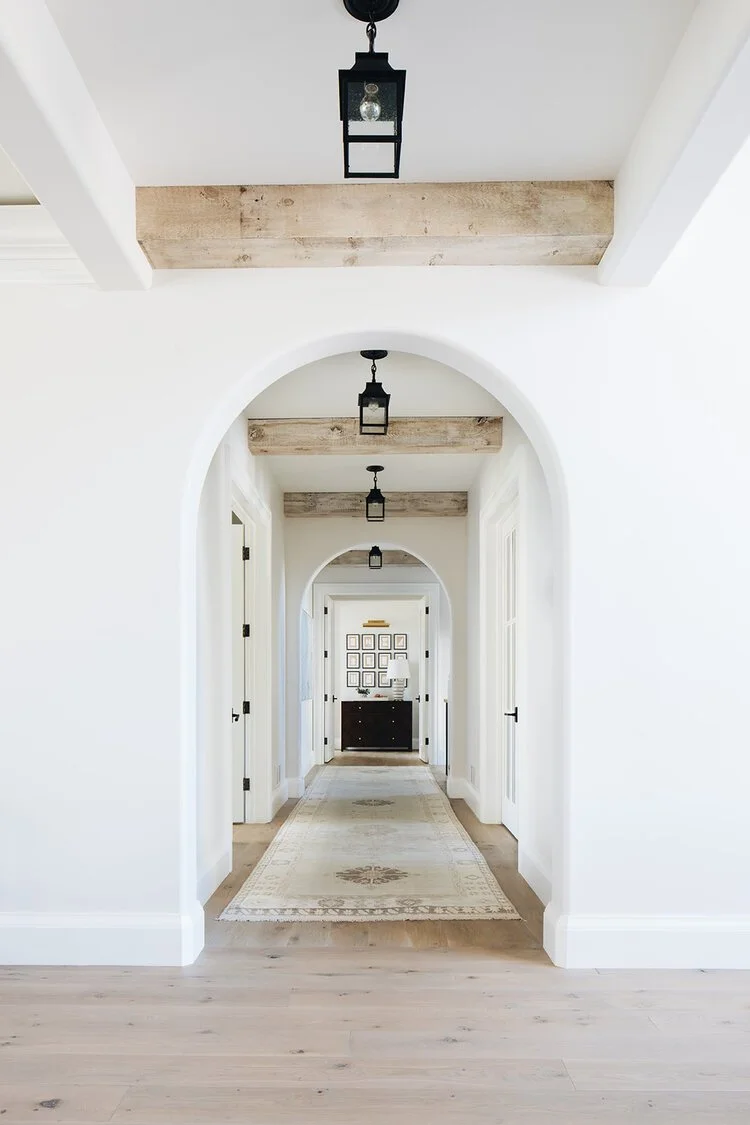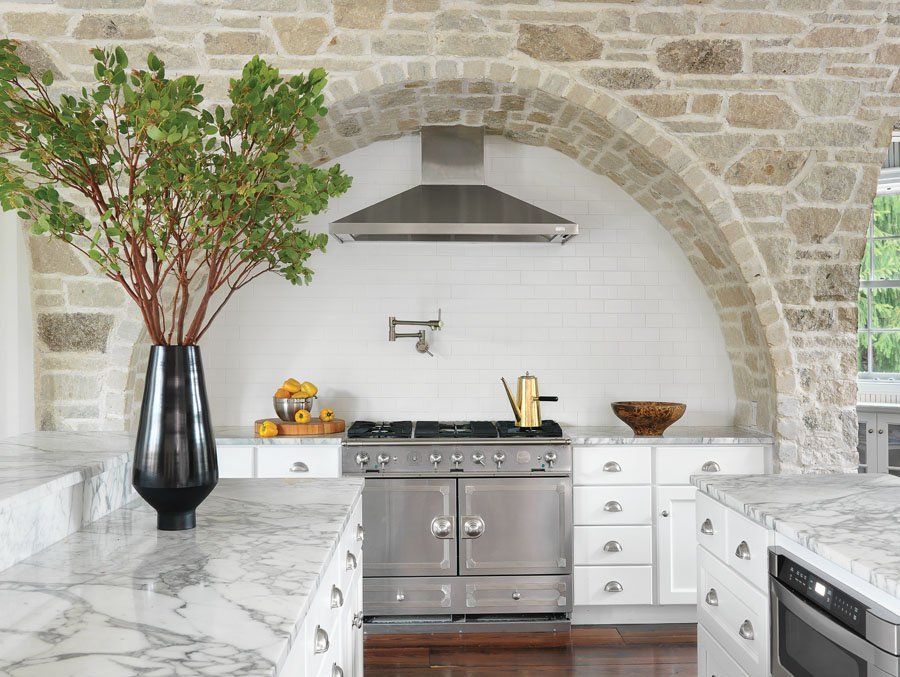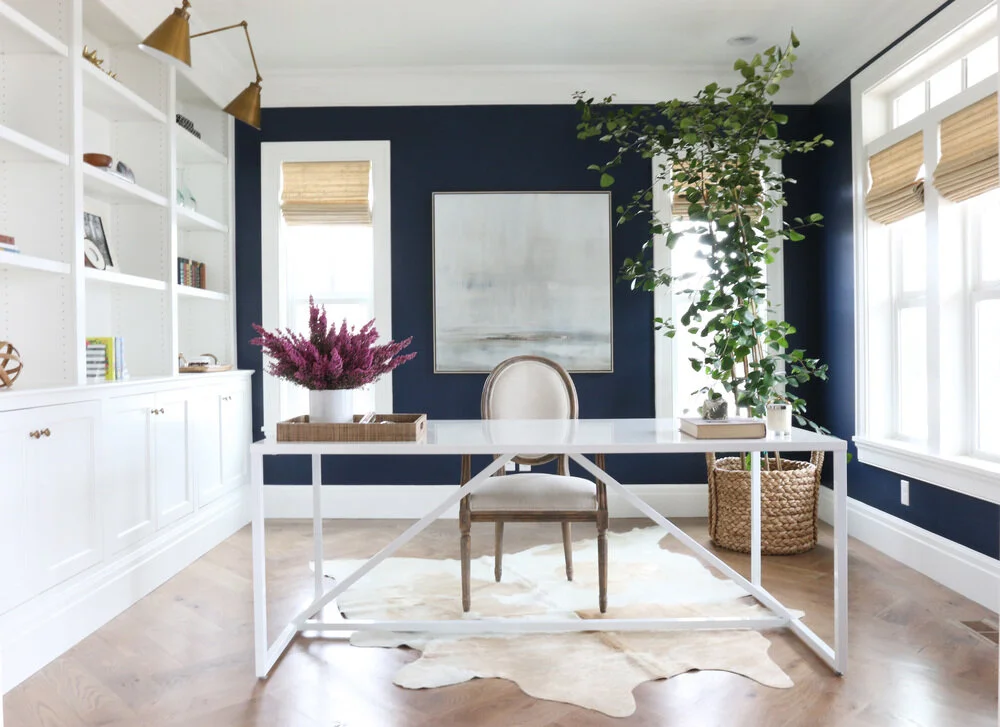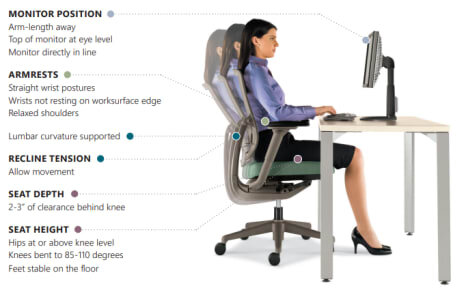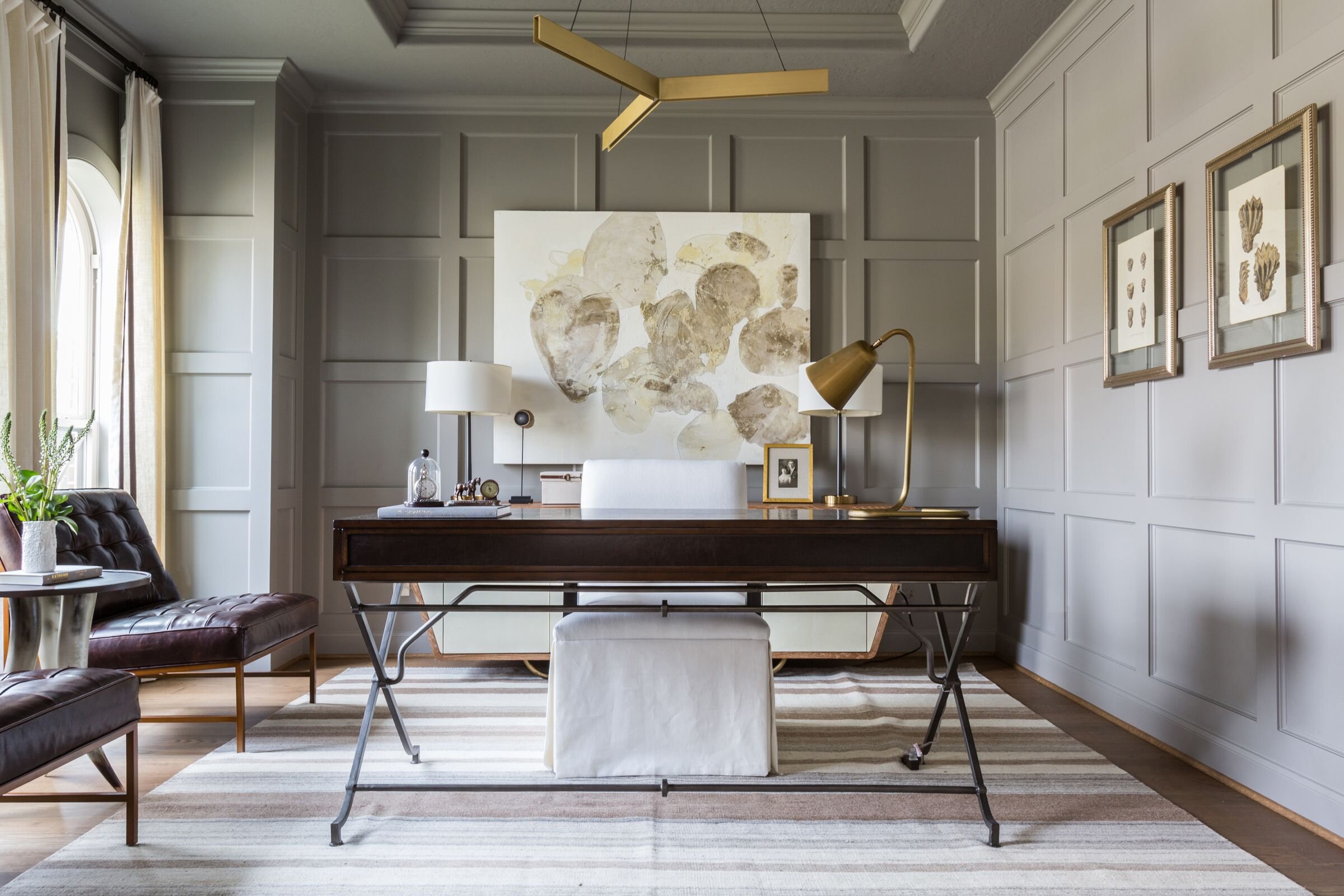DESIGN TRENDS COME AND GO, SO WHO WOULD HAVE THOUGHT ONE WOULD LAST FOR OVER 4,000 YEARS? FROM AN ARCHITECTURAL STANDPOINT TO ARTISTIC EXPRESSION, ARCHES ARE A HIGHLY SOUGHT AFTER DESIGN CHOICE. I CAME ACROSS MY FIRST IN-PERSON ARCH SIGHTING IN BARCELONA IN 2017 and iT WAS BREATHTAKING TO SEE THIS SYMMETRY OF PERFECT CURVATURE IN SUCH A LARGE SCALE. TODAY WE CAN FIND THIS SHAPE IN A VARIETY OF STRUCTURAL CHOICES, FURNITURE, ACCESSORIES, AND EVEN TILE SHAPES.
VIA PATTERNSANDPROSECCO.COM KATE MARKER HOME TOUR
VIA DOMINO.COM
ARCHITECTURAL ARCHES
HALLWAYS, BOOKCASES, STOVE COVES- ARCHES ARE BEING PLACED CREATIVELY THROUGHOUT A HOME. THE CURVES ADD VISUAL INTEREST AND REPLACE THE SHARP LINES WE HAVE BECOME ACCUSTOMED TO SEEING THROUGHOUT OUR HOMES. ARCHES HAVE A TENDENCY TO LINK TWO ROOMS TOGETHER INSTEAD OF CREATING SEPARATE SPACES. WHETHER IT’S CREATED BY A LEAFY ARCHWAY AS THE ENTRANCE TO YOUR GARDEN, OR EXPANDING THE CURRENT OPENINGS THROUGHOUT YOUR HOME, THE OPTIONS ARE ENDLESS WHEN IT COMES WHERE AND HOW YOU CAN ADD AN ARCH TO YOUR SPACE.
VIA HOUSEANDHOME.COM
VIA CASE.IT
ARCHED DOORWAYS AND WINDOWS
WITH the general trend of HAVING OPEN AND AIRY SPACES WITHIN YOUR HOME, IT’S BECOMING MORE COMMON TO REPLACE DOORWAYS AND WINDOWS WITH ARCHES. AN ARCHED FRONT DOOR MAKES A STATEMENT IMMEDIATELY WHEN ENTERING THE HOME. IT CAN REALLY SET THE TONE WHILE ELEVATING THE SPACE. HAVING ARCHED WINDOWS GIVES THE overall IMPRESSION OF LENGTH- TALL, CLASSIC, AND UNIQUE. BOTH OPTIONS CREATE A VERY PERSONALIZED LOOK GIVING HOMEOWNERS THE OPTION TO INFUSE THEIR HOME WITH CHARACTER AND PERSONALITY.
VIA CNTRAVELER.COM
via paisley design interiors
STOVE COVEs
ONE OF THE MOST UNIQUE DESIGNS I HAVE COME ACROSS HAS BEEN THE INFAMOUS STOVE COVE. IF THIS TERMINOLOGY IS NEW TO YOU, A STOVE COVE IS SIMPLY AN ALCOVE THAT’S CREATED FOR THE STOVE TO BE SET IN. WHEN COVID SWEPT THE WORLD, PEOPLE WERE IMMEDIATELY PROMPTED TO COOK MORE AT HOME. THIS IMPACTED THE MASSES AND HAD EVERYONE WONDERING, “HOW CAN I MAKE MY KITCHEN A MORE FUN PLACE TO SPEND TIME?” WITH KITCHEN APPLIANCES BECOMING MORE AND MORE FASHIONABLE, THE STOVE BECAME AN OBVIOUS CHOICE AS THE FOCAL POINT OF THE KITCHEN. WITH A growing INTEREST IN CUSTOM HOODS, an arched stove cove OFFERS THE HOMEOWNER a CUSTOMIZABLE DESIGN for THEIR KITCHEN. YOU CAN SEE THESE ALCOVES SURROUNDED BY LIMESTONE, HIGHLIGHTED WITH A BOLD TILE BACKSPLASH, AND you can EVEN CREATE a NICHE TO HOLD SPICES AND OILS.
VIA STLMAG.COM JESSIE D. MILLER’S CLAYTON HOME
PAINTED ARCHES
PERHAPS THIS BLOG HAS INSPIRED YOU, BUT YOU MAY NOT BE READY FOR A FULL-ON RENOVATION. NOT TO WORRY, THE PAINTED ARCH IS HERE TO STAY. WITH MANY DIY’ERS POSTING VIDEOS, YOU TOO CAN PAINT YOUR OWN PERFECT ARCH. UNSURE IF YOU WANT TO COMMIT TO PAINT? A SIMPLE GOOGLE SEARCH OF “ARCH PEEL AND STICK DECAL” WILL GIVE YOU AN ARRAY OF REMOVABLE OPTIONS. ETSY, POTTERY BARN, WAYFAIR (JUST TO NAME A FEW)- THEY’RE ALL HAPPY TO SHARE THEIR DESIGN CONCEPTS FOR A BEAUTIFUL ADDITION TO YOUR WALL.
VIA POTTERYBARN.COM
via samanthasantana.com


